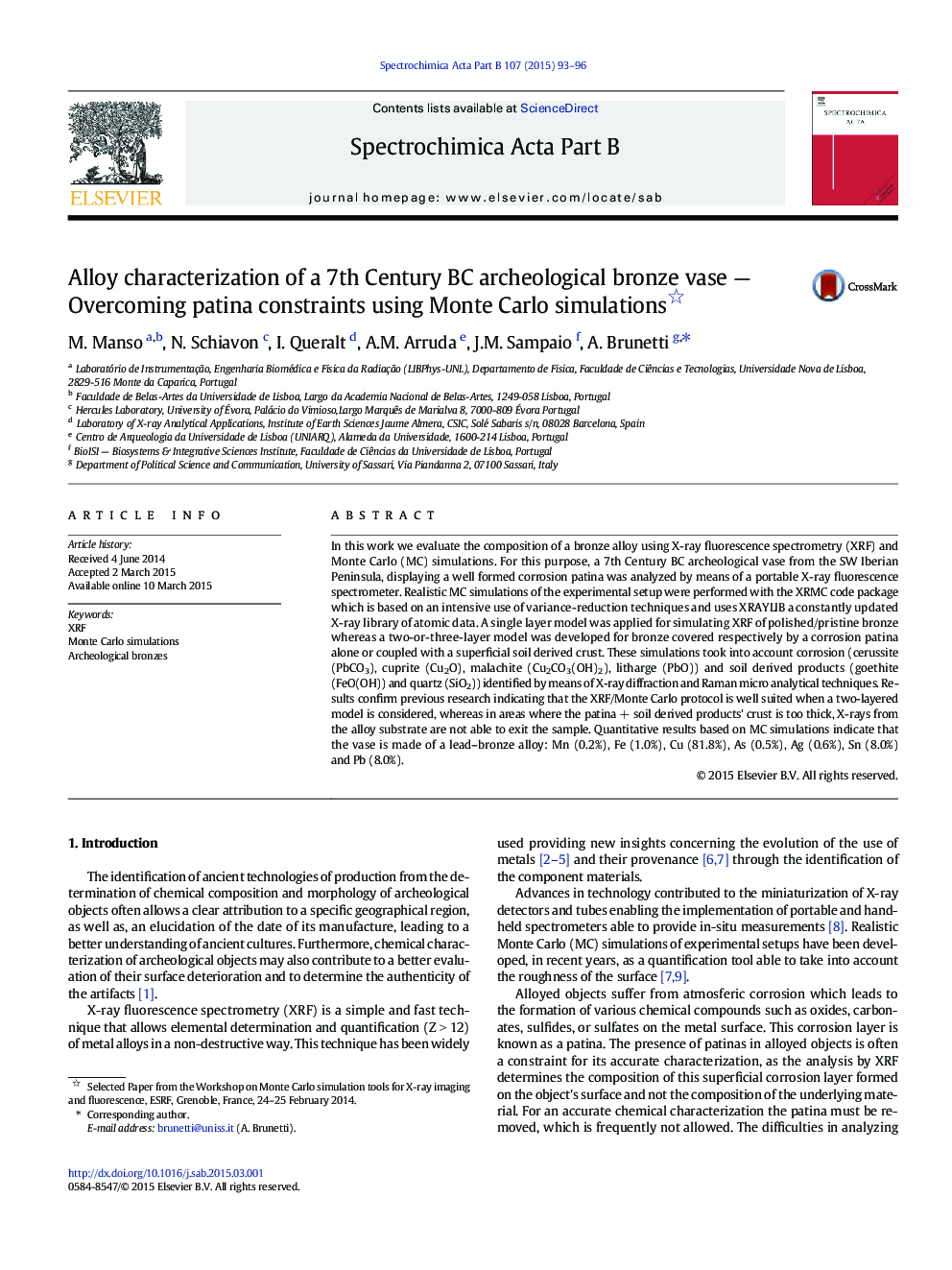| کد مقاله | کد نشریه | سال انتشار | مقاله انگلیسی | نسخه تمام متن |
|---|---|---|---|---|
| 1239625 | 1495696 | 2015 | 4 صفحه PDF | دانلود رایگان |
• We study an archeological bronze vase with patina corrosion using XRF spectrometry.
• The experimental setup is modeled using Monte Carlo (MC) simulations.
• Combining MC simulations with XRF it is possible to derive concentrations.
• We demonstrated that this is possible without removing the patina.
In this work we evaluate the composition of a bronze alloy using X-ray fluorescence spectrometry (XRF) and Monte Carlo (MC) simulations. For this purpose, a 7th Century BC archeological vase from the SW Iberian Peninsula, displaying a well formed corrosion patina was analyzed by means of a portable X-ray fluorescence spectrometer. Realistic MC simulations of the experimental setup were performed with the XRMC code package which is based on an intensive use of variance-reduction techniques and uses XRAYLIB a constantly updated X-ray library of atomic data. A single layer model was applied for simulating XRF of polished/pristine bronze whereas a two-or-three-layer model was developed for bronze covered respectively by a corrosion patina alone or coupled with a superficial soil derived crust. These simulations took into account corrosion (cerussite (PbCO3), cuprite (Cu2O), malachite (Cu2CO3(OH)2), litharge (PbO)) and soil derived products (goethite (FeO(OH)) and quartz (SiO2)) identified by means of X-ray diffraction and Raman micro analytical techniques. Results confirm previous research indicating that the XRF/Monte Carlo protocol is well suited when a two-layered model is considered, whereas in areas where the patina + soil derived products' crust is too thick, X-rays from the alloy substrate are not able to exit the sample. Quantitative results based on MC simulations indicate that the vase is made of a lead–bronze alloy: Mn (0.2%), Fe (1.0%), Cu (81.8%), As (0.5%), Ag (0.6%), Sn (8.0%) and Pb (8.0%).
Journal: Spectrochimica Acta Part B: Atomic Spectroscopy - Volume 107, 1 May 2015, Pages 93–96
